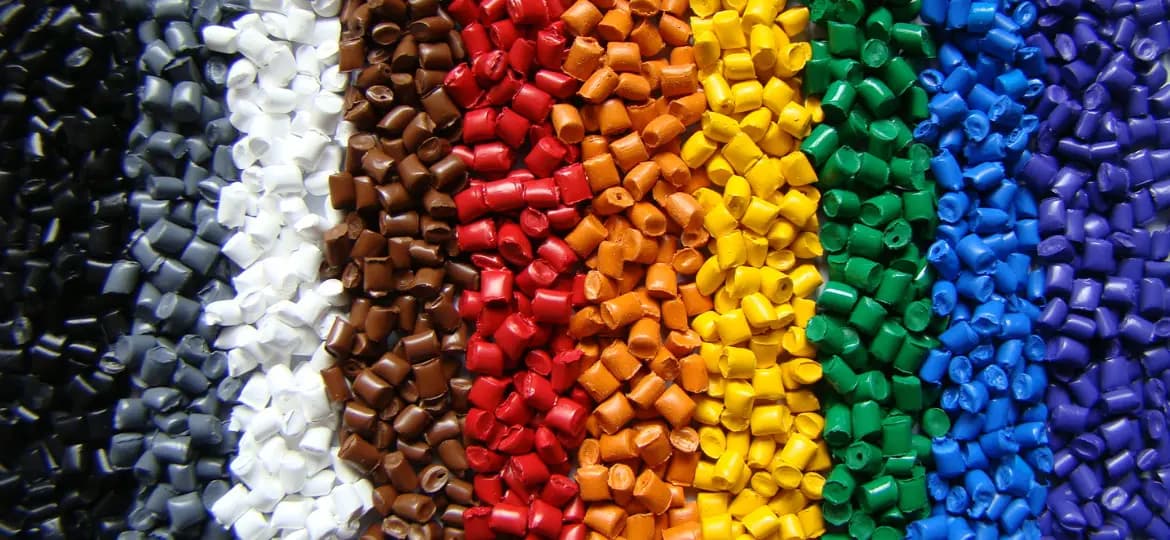Color masterbatches are concentrated mixtures of pigments and additives blended and extruded together in a carrier matrix, such as resin or wax. They are used to add color and other properties to plastic products. This type of masterbatch is a crucial component in the plastics industry, as it enables the creation of a wide range of colored plastic products with specific properties.

what is a Color masterbatch ?
Color masterbatches are concentrated mixtures of pigments and additives encapsulated in a carrier material, typically resin or wax. These masterbatches are designed to add color or other properties to plastic products during manufacturing, allowing for precise control over the final product’s attributes. They offer several advantages over the direct addition of raw pigments or additives. Primarily used for coloring, color masterbatches can also enhance the properties of plastic products, making them essential in various industries, including plastics and packaging, automotive, textiles, agricultural film production, and construction and building materials.
Composition and Types
Color masterbatches have two main components: colorants and polymer-specific carrier resin. The colorants can be classified into three categories: organic dyes, organic pigments, and inorganic pigments. The carrier resin helps to disperse the colorants evenly throughout the plastic material, ensuring consistent color quality and stability.
Color Range Of Color Masterbatch
Masterbatches are available in a wide range of colors, including solid colors, pearlescent, metallic, and special effect pigments, enabling the production of various colored plastic products.
Manufacturing Process
The manufacturing process of color masterbatches involves the following steps:
- Identifying and Weighing: Identifying and weighing the needed pigments and additives.
- Mixing: Mixing the pigments or additives with a carrier resin or polymer.
- Extrusion: Extruding the concentrated mixture.
- Cooling and Forming: The mixture is formed into granules, powders, or other masterbatch vehicles.
- Bagging: Bagging the final product.
The Application Of Color Masterbatch
Color masterbatches are extensively used in the manufacturing of plastic products across various industries, including packaging, automotive, construction, consumer goods, and many others, where colored plastic components are required.
Advantages Of Using Color Masterbatches
Color masterbatches offer several advantages over other coloring methods for plastic products. Here are some of the key benefits:
-
Easy Handling
Easy Handling
Masterbatches come in pellet form, making them easy to store, move, and manipulate during the manufacturing process. Pigments, in contrast, are difficult to manage because they are in powdered form.
-
Optimal Dispersion
Optimal Dispersion
Color masterbatches are designed for optimal dispersion in a polymer matrix, ensuring excellent color distribution in the final product. Pigments, on the other hand, do not disperse well on their own.
-
Consistent Color Matching
Consistent Color Matching
Masterbatches allow for consistent color matching, as the binding agent used within the masterbatch can be matched to the polymer for a better melting process.
-
Reduced Risk of Contamination
Reduced Risk of Contamination
Masterbatches are encapsulated by a polymer, reducing the risk of pigments becoming airborne during the manufacturing process and causing contamination of adjacent manufacturing lines.
-
Additive Concentrates
Additive Concentrates
Masterbatches can include additive concentrates, delivering advantageous traits such as flame retardancy, optical brightening, UV stability, and chemical resistance. This helps limit the number of feeds into your process.
-
Reduced Waste
Reduced Waste
Masterbatches offer excellent color consistency for products, reducing the amount of pigment required for a product and minimizing waste.
-
Cost-Effective
Cost-Effective
Masterbatches can offer cost savings from 5% to 10% over standard grades of carbon black, making them a cost-effective solution for coloring plastic products.
-
Better Control Over Opacity
Better Control Over Opacity
Masterbatches offer better control over the opacity of a colored product, as the amount of pigment housed in a masterbatch is less than when pigments are in their raw and powdered form.
-
Versatility
Versatility
Masterbatches can be used in a wide range of applications, including automotive, packaging films, pipes, tubing, fencing, deck railings, geomembrane, and medical devices, among others.
-
Sustainability
Sustainability
Masterbatches made of 100% recycled content can help manufacturers save costs and achieve the same performance as standard grades of carbon black while reducing the use of oil in the production process for sustainability.
Overall, color masterbatches offer a more advanced and efficient means of coloring plastic products compared to raw pigments, providing consistent color distribution, easy handling, reduced waste, and added functionality.
Common Issues and Solutions
Some common issues with color masterbatches include:
- Color Variation: This is caused by differences in the injection molding machine or the resin used.
- Pigment Migration is a normal phenomenon in some masterbatches and does not affect the quality of the product.
- Color Shift: Caused by changes in the resin used or improper temperature control.
- Solutions include temperature control, which maintains a consistent temperature during injection molding.
- Resin Selection: Select the suitable resin for the masterbatch.
- Handling Procedure: Following proper procedures to prevent contamination and ensure consistent color quality.
Conclusion
In conclusion, color masterbatches are a superior and versatile solution for coloring and enhancing the properties of plastic products in various industries. They offer numerous advantages over traditional coloring methods, including optimal dispersion, easy handling, consistent color matching, reduced waste, and cost-effectiveness. Additionally, color masterbatches can include additive concentrates, providing added functionality such as flame retardancy, optical brightening, UV stability, and chemical resistance. This helps limit the number of feeds into the manufacturing process, making them a more efficient solution.
